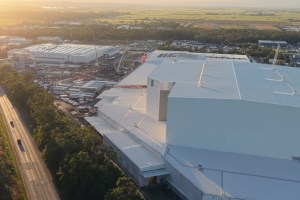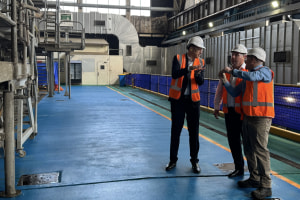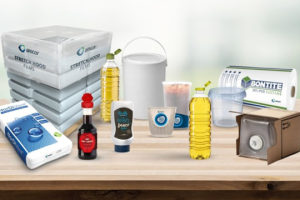Augmented reality (AR) is one of the most exciting technologies to emerge in the intelligent packaging space, opening a world of possibilities for brand owners seeking to drive immersive consumer interaction with their products.
Along with other consumer engagement-enabling technologies like digital printing, augmented reality [AR] is being hailed as a dynamic marketing tool that is set to revolutionise the packaging industry.
AR encompasses the integration of digital information with the user’s environment, in real time. The main difference between AR and virtual reality (VR) is that while VR involves creating a totally artificial environment, AR uses the existing environment and overlays new information on top of it.
As applied to brand packaging, this is how it typically works: The digital information is visible through mobile or tablet devices and is enabled by an an app, which allows the user to access and browse the digital interactive experiences.
The app (such as the AUSPACK AR app) is available to download on iOS and Android and works on most tablets. The user points the camera at the ‘target’ area on the pack, which can be printed logos, icons, pictures or the entire pack itself, and the app will scan automatically and activate the content immediately.
For brand designers and marketers, AR is a gateway to a new dimension in on-pack communication. It opens a world of content and rich experiential possibilities for consumers, because the information is no longer limited to what can be printed in the limited real-estate on the label or pack.
This highly engaging, multi sensory content can take myriad forms and serve multiple purposes.
On a basic level it can provide essential nutritional and allergy information, and by adding another layer of ‘infotainment’ the consumer can be shown actual videos of cooking demonstrations and recipe ideas, or be given instructions for how to use the product or about a special feature of the packaging.
Tapping in to topical consumer concerns, like product provenance for instance, an image of cows on a milk carton could open to footage of cows roaming a dairy farm where the milk in question was produced. Or free range egg claims could be similarly proven with a quick scan of the label on an egg carton.
AR technology uses any variation of dynamic audio visual content to impart information and tell brand stories for fully immersive experiences that enhance sensory brand perception. It is also a fantastic platform to engage consumers on the social platforms such as YouTube, Facebook and Instagram
As today’s shopping experience grows increasingly interactive, and the consumer’s relationship with their smartphone deepens, smartphone integration into the product experience is an obvious way for brands to engage consumers.
Big brand owners like McDonald's, Nestle, Mars and Mondelez are among the growing number making use of AR.
By turning the package into a multidimensional communication vehicle, AR technology offers almost unlimited creative and value-adding scope, and is changing how consumers interact, use and think about products.
The beauty of AR for brand owners is that it’s a flexible platform, allowing for frequent changes of content without any change in packaging design – a cost- and resource-efficient way of driving sales.
AR will be in evidence at AUSPACK 2017, with a number of exhibitors using the technology to engage visitors:
Omniverse Foster (Stand 27), the company behind the AR technology driving AUSPACK’s promotional campaign, will be demonstrating advances made to its 3D immersive packaging technology which it introduced at AUSPACK 2015.
The company will showcase how it is taking AR to the next level of digital platforming, enhancing the technology’s ability to bring brands to life.
Heat and Control’s Business Manager Packaging and Inspection Systems, Robert Marguccio, says augmented reality and virtual reality experiences are the ideal way for exhibitors to showcase equipment that is too large or too complex to bring onto a show stand.
For example, Heat and Control’s Brisbane Test Kitchen and Product Testing Facility houses breakthrough processing technology for the snacks market in the form of the Heat Wave Fryer.
As part of the Heat and Control AUSPACK 2017 stand (72), the company will have an augmented reality display of its Heat Wave Fryer, which will give visitors the opportunity to experience a fully interactive 3D animation of the high tech product.
Augmented reality will also feature on ABB’s stand (502), with a live AR demonstration that will take visitors through a RobotStudio application.
RobotStudio is built on the ABB VirtualController, an exact copy of the real software that runs your robots in production. This allows very realistic simulations to be performed, using real robot programs and configuration files identical to those used on the shop floor.
AUSPACK 2017: 7-10 March, Sydney Showground, Sydney Olympic Park






